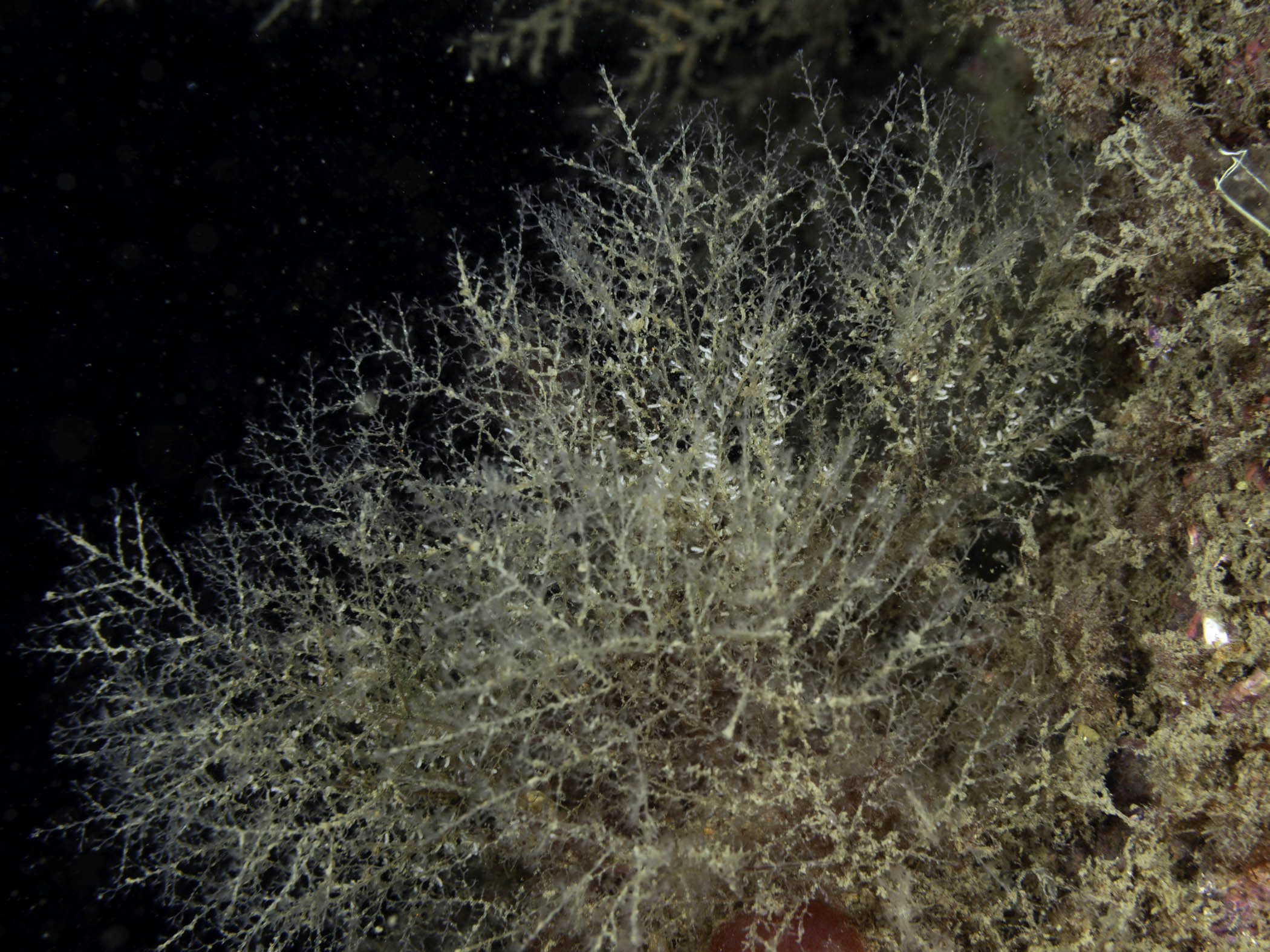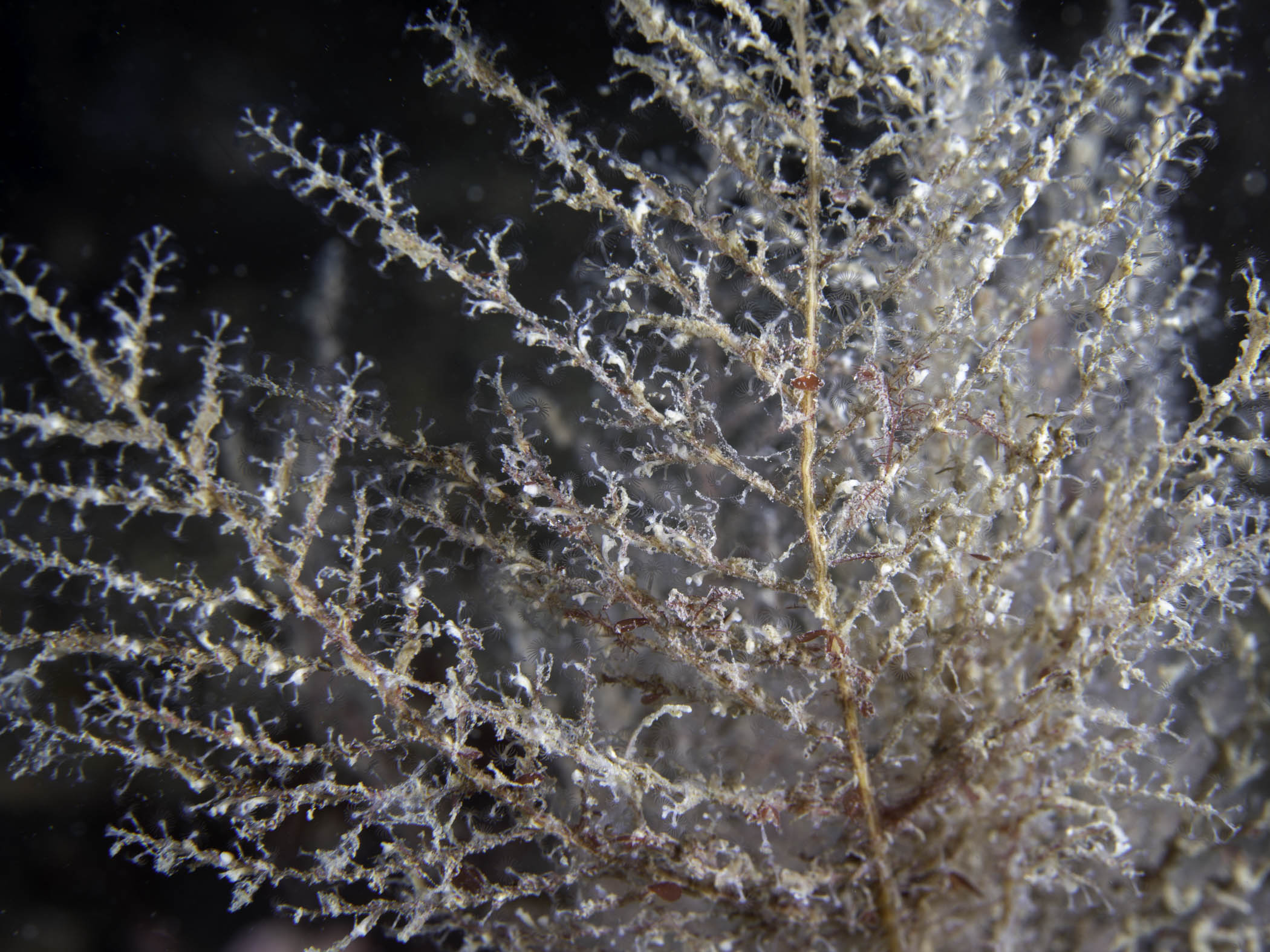| CNIDARIA : Leptothecata : Haleciidae | SEA ANEMONES AND HYDROIDS |
Halecium beanii (Johnston, 1838)
 |
| Halecium beanii |
Description: The colony branches irregularly in 3-dimensions from the base. The branches are finer than those of Halecium halecinum and are bent at intervals, as though the branches have been broken and have regrown. The reproductive gonothecae are characteristic in shape with one or two hydrothecae emerging from the side. Well grown clumps may reach 70mm in height, but typical colonies are approximately 50mm.
Habitat: Attached to horizontal bedrock, stable boulders and shells, in moderately strong tidal streams.
Distribution: This species is more common on the northern coasts of the British Isles but occurs as far south as Plymouth.
Similar Species: This species is easily confused with Halecium halecinum but is finer in its main stems and branches more irregularly.
Key Identification Features:
- Irregular branching of all stems in 3-dimensions forming bushy colony.
- Main stems thin, not much thicker than side branches.
- Gonothecae bean-shaped with lateral hydranths.
Distribution Map from NBN: Halecium beanii at National Biodiversity Network mapping facility, data for UK.
iNaturalist: Halecium beanii at iNaturalist World Species Observations database.
WoRMS: Halecium beanii at World Register of Marine Species. Accepted name: Halecium beanii (Johnston, 1838). AphiaID: 157947.
Classification: Biota; Animalia; Cnidaria; Medusozoa; Hydrozoa; Hydroidolina; Leptothecata; Haleciidae; Halecium
| Previous species | Next species |
| Picton, B.E. & Morrow, C.C. (2024). Halecium beanii. (Johnston, 1838). [In] Encyclopedia of Marine Life of Britain and Ireland. https://www2.habitas.org.uk/marbiop-ni/speciesaccounts.php?item=D5250. Accessed on 2024-07-04 |
